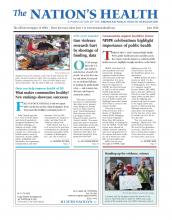Teenagers who are homeless with their families are at a higher risk of suicide attempts, a new study finds.
The study, published in the April issue of Pediatrics, showed how homelessness serves as a risk factor for mental health problems among teens.
Researchers looked at data from the 2013 Minnesota Study Survey, which included responses from more than 62,000 students attending Minnesota public schools. They found that 42 percent of youth who were homeless with their families had high levels of emotional distress, about 29 percent had self-injurious behaviors, 21 percent had suicidal ideation and about 9 percent had attempted suicide within the past 12 months — all more than twice as high as their peers who were not homeless.
Youth who were homeless with their families also had lower levels of developmental assets — including positive identity, social competency, empowerment, academic orientation and positive teacher assets and parent connectedness — that served as protective factors. While all developmental assets reduced the likelihood of all youth experiencing emotional distress, self-injurious behaviors, suicidal ideation and suicide attempts, they had a greater effect on teens who were not homeless.
Stable housing may be a “critical factor” for developmental assets to be protective, the researchers said.
While parents who are homeless have their own struggles to deal with, they can take steps to help their children better cope, said lead study author Andrew Barnes, MD, MPH, assistant professor of pediatrics at the University of Minnesota Medical School.
“One thing parents can do is be more aware of how their stress is affecting their kids,” and be active listeners, Barnes told The Nation’s Health.
He also encouraged parents to practice self-care and suggested connecting with social workers or support groups for stress reduction.
Public health can advocate for care that better reaches youth who are homeless — many of whom may also be dealing with past trauma, Barnes said. The study noted that adverse childhood experiences are common among youth who are homeless, and could be risk factors for mental health problems and harmful behaviors.
Also critically important is getting people into housing in the first place to improve health outcomes among youth and their families who are homeless, Barnes said, noting that “people get healthy when they have housing.”
For more information, visit http://pediatrics.aappublications.org/content/early/2018/03/15/peds.2017-1767.
- Copyright The Nation’s Health, American Public Health Association









